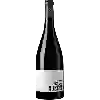
Winery GaydaCuvée Mariage
In the mouth this red wine is a powerful with a nice balance between acidity and tannins.
This wine generally goes well with beef, veal or pasta.
Taste structure of the Cuvée Mariage from the Winery Gayda
Light | Bold | |
Smooth | Tannic | |
Dry | Sweet | |
Soft | Acidic |
In the mouth the Cuvée Mariage of Winery Gayda in the region of Pays d'Oc is a powerful with a nice balance between acidity and tannins.
Food and wine pairings with Cuvée Mariage
Pairings that work perfectly with Cuvée Mariage
Original food and wine pairings with Cuvée Mariage
The Cuvée Mariage of Winery Gayda matches generally quite well with dishes of beef, pasta or veal such as recipes of fast and, tagliatelle with seafood and saffron cream or stuffed squid in the sétoise sauce.
Details and technical informations about Winery Gayda's Cuvée Mariage.
Discover the grape variety: Cabernet-Sauvignon
Cabernet-Sauvignon noir is a grape variety that originated in France (Bordeaux). It produces a variety of grape specially used for wine making. It is rare to find this grape to eat on our tables. This variety of grape is characterized by small bunches, and small grapes. Cabernet-Sauvignon noir can be found in many vineyards: South-West, Loire Valley, Languedoc & Roussillon, Cognac, Bordeaux, Armagnac, Rhone Valley, Provence & Corsica, Savoie & Bugey, Beaujolais.
Last vintages of this wine
The best vintages of Cuvée Mariage from Winery Gayda are 2012, 2013, 2014
Informations about the Winery Gayda
The Winery Gayda is one of of the world's great estates. It offers 52 wines for sale in the of Pays d'Oc to come and discover on site or to buy online.
The wine region of Pays d'Oc
Pays d'Oc is the PGI for red, white and rosé wines that are produced over a wide area of the southern coast of France. The PGI catchment area corresponds roughly to the Languedoc-roussillon">Languedoc-Roussillon wine region, one of the largest wine regions in France. The area covers all wines that are not produced under the strict laws that govern AOC-level appellations in the regions: among them, Corbières, Minervois and the Languedoc appellation itself. The Pays d'Oc PGI is arguably the most important in France, producing the majority of the country's PGI wines.
The word of the wine: Blanc de blancs (champagne)
Champagne made only from the Chardonnay grape. The expression has been somewhat overused by the intensive use made of it by certain large distributors of white table wines (or sparkling wines) who were thus seeking to promote their product.














